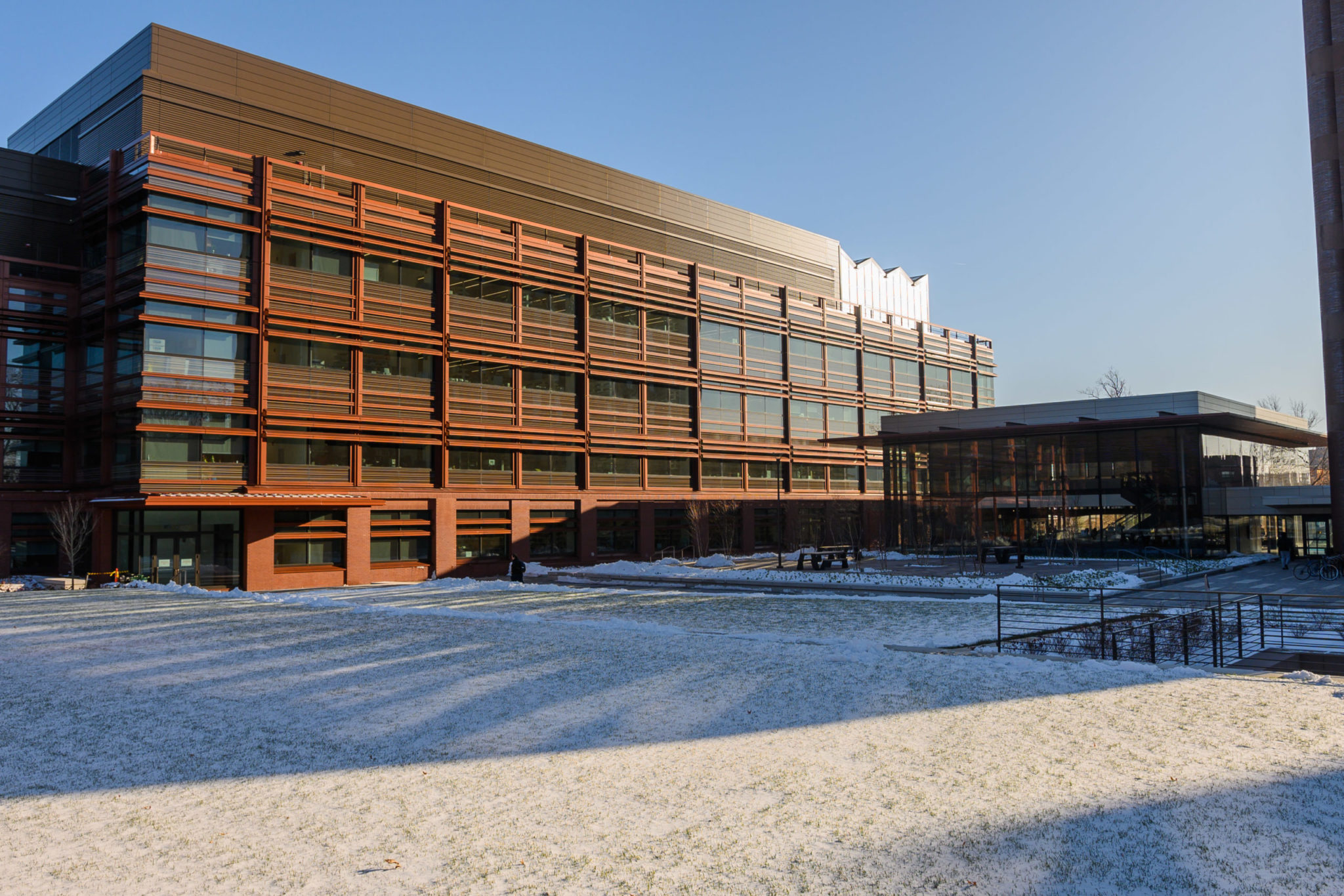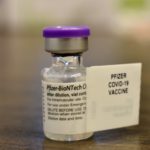The future of faculty searches? MB&B Department implements new reforms that aim to increase diversity

Lukas Flippo, Photo Editor
Yale’s Molecular Biophysics and Biochemistry Department has no Black faculty members. It has never had any in the 52 years since its inception, according to department chair Enrique M. De La Cruz.
For this year’s search for an assistant professor on the tenure track, the Molecular Biophysics and Biochemistry Department enacted top-to-bottom reform to bring in a more diverse applicant pool. The search committee, with the support of the department chair, asked candidates to submit application materials without the names of schools they’ve attended or journals they’ve published in. Initial screenings were also conducted anonymously.
The group proactively reached out to scientists from underrepresented groups and encouraged them to apply. Additionally, they required a statement on diversity, equity and inclusion, and evaluated candidates on their understanding of the challenges people from underrepresented groups face and past actions they’d taken to confront these obstacles. All of these practices were implemented throughout an official MB&B search for the first time.
At the close of the process, the search committee reported interviewing a more diverse slate of finalists, making two offers awaiting signatures on the contract lines and creating a roadmap for future faculty searches. They did not want to make the search specifically about race or gender, which was why they used anonymization, said Andrew Miranker, professor of molecular biophysics and biochemistry and search committee chair. They wanted to bring in the best scientists, Miranker said, adding that if they broadened the applicant pool, they would have more strong scientists to choose from, and likely more diverse demographics as well.
“We all held our breath because we thought, we’re going to make all this effort, what if we only pick white guys?” Miranker said. “We really felt we were rolling the dice, but the benefit is we were making a very important statement upfront. … The science is what matters.”
In the first non-anonymized round of the search process, 45 percent of candidates were women, compared to a starting pool that was about one-third women. Demographic information collected during anonymous portions of faculty searches is withheld for privacy reasons, according to Miranker. The total number of applicants who self-identified as from an underrepresented group — Hispanic/Latino, American Indian/Alaskan Native, Black/African American and Native Hawaiian/Pacific Islander — in the department’s most recent search in 2019 was three. For this year’s search, it was 22, Miranker said. The fraction of female applicants was unchanged.
The process produced a diverse final candidate pool. Of 14 people selected for interviews, seven were women and seven were people of color. One of the candidates the department extended an offer to had been identified by the undergraduate committee for De La Cruz to proactively reach out to.
Changes to the hiring process
The idea of an anonymized application process is nothing new. It is how many professional orchestras conduct auditions and has previously been incorporated into higher education searches at institutions like the University of Connecticut and the University of California system. The difference this year is that the committee was “really loud about it,” Miranker said.
But asking candidates for a diversity statement is more novel at Yale. De La Cruz emphasized that science was not compromised in the search process. He got the impression that some of his colleagues may initially have had reservations that striving for diversity implies lowering the bar or sacrificing another asset, he said. Upon first hearing about the unique search process, people can have an instinctual reaction that it gets away from the science and moves towards personal, identity-related attributes.
Larry Gladney, dean of diversity and faculty development in the Faculty of Arts and Sciences, said people can sometimes object to diversity statements, seeing them as asking for a “loyalty statement to an ideal around diversity.”
But De La Cruz said faculty need to be able to teach students from all different backgrounds. Valuing diversity makes people more effective educators, he added. The committee wanted to know what would be different in candidates’ classrooms and how they would organize laboratories where people felt they could resolve conflicts, Miranker said. White male applicants from affluent backgrounds have to have made an effort, he said.
“You just cannot run a laboratory and teach in 2021 without having made some effort to understand how the world operates,” Miranker said. “And then, what’s the plan? How are you going to actually do things?”
In his personal experience, De La Cruz said that his colleagues have always supported him. But he sees an external impression of Yale as potentially hostile to people from underrepresented groups.
“It’s an opinion, but in my opinion, Yale is not viewed as a friendly place,” De La Cruz said. “Institutions such as ours are not viewed as friendly, welcoming places for people of underrepresented groups.”
Until recently, he was the only member of an underrepresented group in his department, and he’s worked at Yale for 20 years. Now, he is one of two.
Talent is “like dirt” — it is everywhere, De La Cruz said. If Yale doesn’t search everywhere for candidates, it’s missing out on scientific strength.
In setting up their search, the group consulted with a professor at the University of Connecticut and staff at the Poorvu Center on the best way to conduct an anonymized search that limits bias.
Two years ago, while conducting a junior faculty search in the department, Associate MB&B Professor Wendy Gilbert piloted the anonymized search mechanism. She had a volunteer sift through research statements and remove the names of institutions and research journals. Gilbert scored the statements based on a rubric she had created. After she had tangible proof of her thoughts on the proposal, she unveiled the candidates’ identities.
In that search, the starting pool of applicants was about a quarter female. The pool of anonymized research statements she flagged for further consideration was about 45 percent female, Gilbert said. The stark contrast in numbers provided evidence of the efficacy of the search mechanism. But for the single volunteer to anonymize the statements took “hours and hours,” Gilbert said. The volunteer declined to do it again.
For this year’s search, the department asked candidates to anonymize their own statements before submitting them. They posted the job ad on Oct. 16 and gave candidates a little over a month to prepare their applications, which consisted of materials on future research plans, past research accomplishments, contributions to DEI and a teaching statement.
A team of undergraduates also scoured the internet for conferences, prizes, grant awards or scholarships that particularly cater to underrepresented groups and presented a list of names to De La Cruz.
De La Cruz then preemptively reached out to dozens of people, from the list and otherwise, who had shown commitment to diversity — potentially through setting up programs with underrepresented youth in their community — or were part of an underrepresented group, and encouraged them to apply.
“What was empowering about that is that the applicants knew upfront that no one would know anything about them other than their science, and their education mission … and I would consider diversity to be a part of that education mission,” De La Cruz said. “The applicants know they’re being evaluated on their actual credentials” rather than the institutions they attended or journalists they were published in, “which I think sets a completely different tone.”
The search itself
A total of 188 people applied for the position, a fairly standard number for the department, Miranker said.
The search committee then began the fairly onerous process of reading the applications. The four search committee members — Miranker, Gilbert, MB&B professor Donald Engelman and MB&B assistant professor Franziska Bleichert — scrutinized the first few applications together to develop a rubric to evaluate the candidates. Rubrics decrease subjectivity, and therefore bias, Gilbert said, adding that they were created because there is evidence that people overrate the accomplishments and potential of those who resemble themselves.
The rubrics were adapted from a University of California, Berkeley, search in the biological sciences a few years back. The rubrics ranged from one, weak, to three, exceptional. For the statements about future research plans, the committee evaluated candidates on criteria ranging from the innovation of highly novel concepts to the importance of the larger problem.
For the statements about diversity, equity and inclusion, candidates were evaluated on their knowledge of the challenges underrepresented minorities face, on their interest in promoting DEI in their research and service, on a past track record of efforts to emphasize DEI and on their specific goals to spur inclusivity at Yale. Committee members also said they were looking for concrete ideas and evidence that people had thought through or researched what ideas may be most effective at Yale.
“The criteria that were important to me were evidence of meaningful action,” Gilbert said. “In 2020, a lot of people in North America can sort of ‘talk the talk.’ The national conversation, very welcomely, was much more engaged with issues about equity and inclusion of diverse people in a lot of fields. But if a person just decided in 2020 that this was a subject that they cared about, that was not what I was looking for.”
As they began rating the applications, the search encountered its first hiccup. In a typical faculty search, committee members toss out about two-thirds of the applications based on CVs alone, Gilbert said. It takes about 90 minutes to carefully read and score four 1,000-word statements, Bleichert said. With each search committee member assigned about 100 applications, the potential workload seemed astronomical.
Realizing this, Miranker floated the idea of expanding the four-person search committee. The group discussed approaching other department members to join the committee. This meant they needed to evaluate their colleagues, their character and their potential bias, to determine whether or not they should join the committee, Miranker said.
Without meaning to, Miranker was asking them to decide which of their colleagues have the least amount of “unexamined racism,” Gilbert said. Two of the search committee members were not yet tenured, which meant that doing this put them in a difficult position in having to evaluate the character of faculty who would soon vote on whether to grant them tenure.
Once he understood the challenging power dynamics, Miranker issued an open apology, and they did not expand the search committee. This incident inspired him to hopefully write a blog post or journal article about the experience so that others can learn from it.
Instead of adding to the search committee, the group decided to only read the applicants’ research statements on the first round of cuts to manage the workload.
Results of the search
In mid-December, the committee unveiled the identities of the 32 candidates who made it past the fully anonymized portion of the application process. Of the 32 people, 17 were men and 15 were women, compared to a starting pool that was two-thirds male. Over the next month, they narrowed the pool down to 14 people — half of whom were women. Seven of the 14 interviewees were people of color.
In mid-January, the committee held Zoom interviews with the 14 candidates. The committee drafted a set script of four questions for the Zoom interviews to standardize their treatment of the candidates. The questions touched on research problems, departmental goals, teaching and how the candidates would foster a diverse and inclusive environment. They did not let the candidates ask questions, and instead told them to prepare a five-minute presentation on their research questions.
In their interviews, many of the applicants expressed appreciation for the unique search process.
From that 14, five candidates were invited to Zoom into “campus” for two days, meeting potential colleagues in the department and giving seminars and chalk talks. Three of these finalists were people of color. Three of them were women.
The department ultimately made two offers. One of them was to an individual who the undergraduate committee had identified and De La Cruz had reached out to. Information about names and demographics that is collected during faculty searches is often withheld for privacy and legal reasons, and the faculty have not yet accepted the offers, Miranker said.
With the offers out and stacks of applications finally off their desks, the search committee members have stepped back and analyzed the process.
Evaluating diversity statements without any identifying information proved tricky, Gilbert said. For future searches, the committee might recommend separating the diversity statements from the other materials and also allowing people to include personal details. Gilbert said it “undermines” diversity statements — which can often include and build on demographic details — to make them anonymous.
In hindsight, Gilbert said she wished the committee had prepared a presentation for the department on the literature behind anonymous search procedures and the precedents by peer institutions. But by the time the committee realized that some of their department members felt left behind, they were consumed by the search process.
The Department of Molecular Biophysics and Biochemistry was founded in 1969.
Rose Horowitch | rose.horowitch@yale.edu










